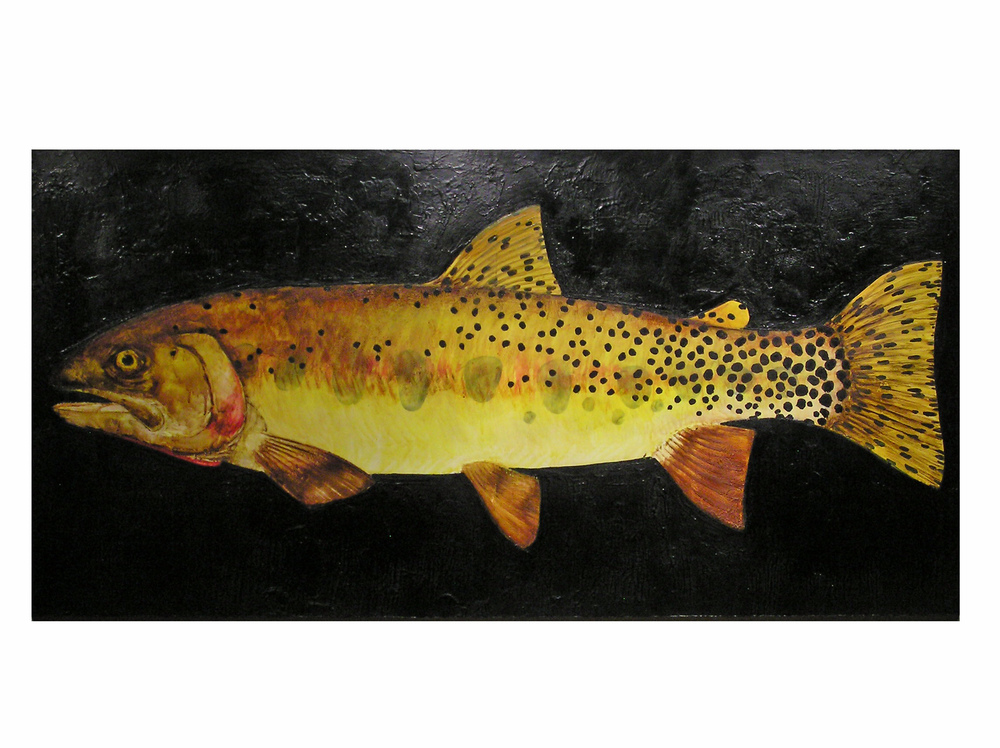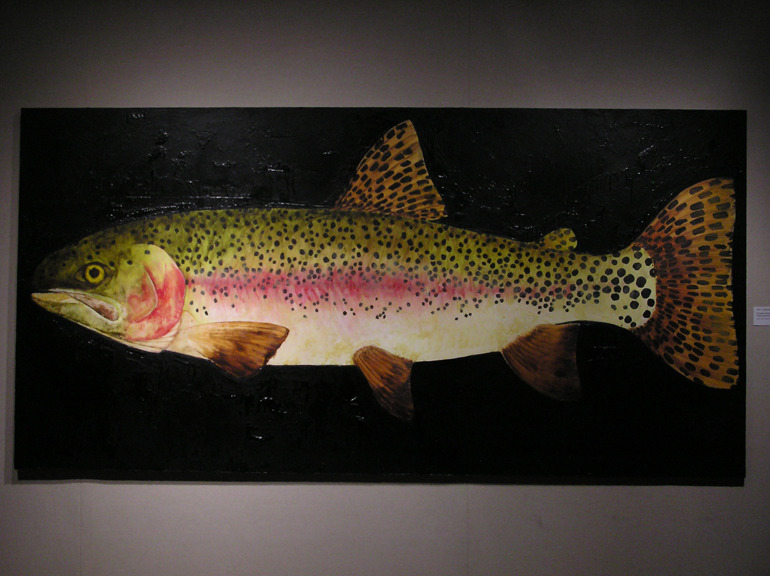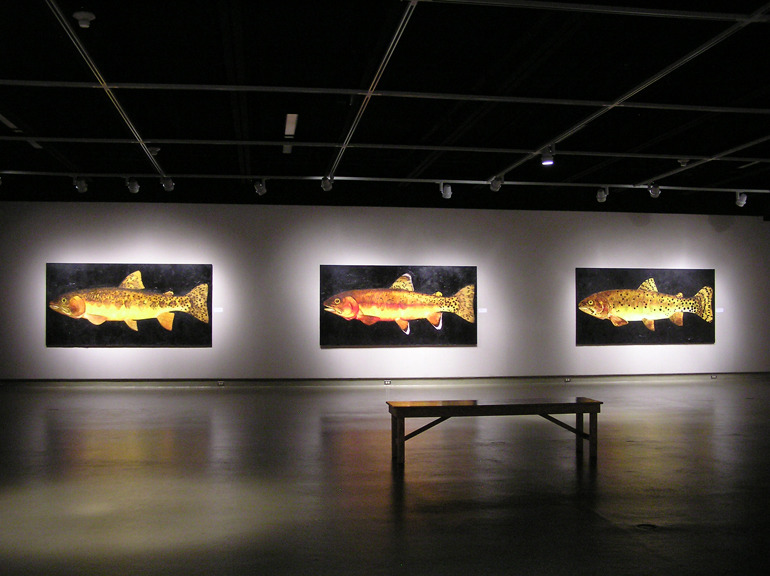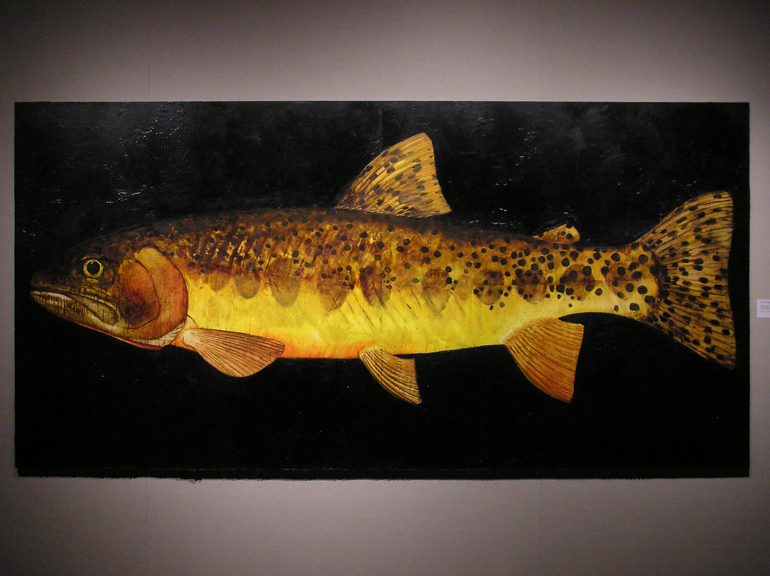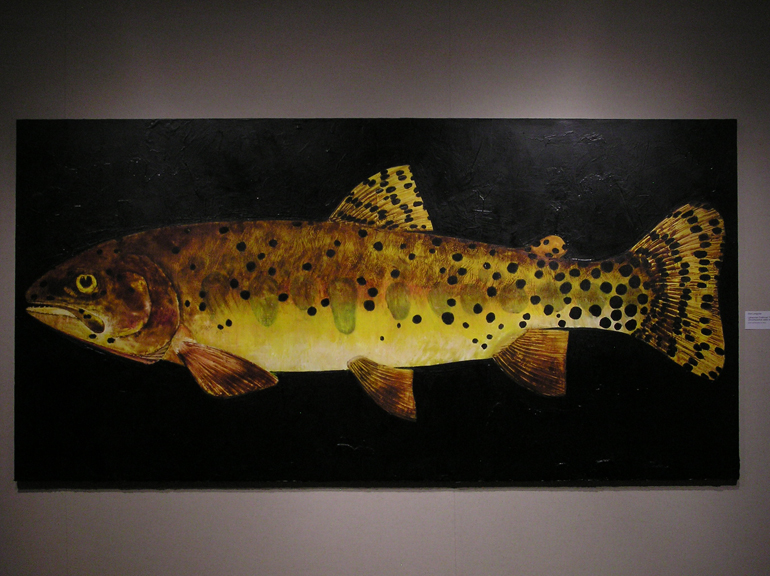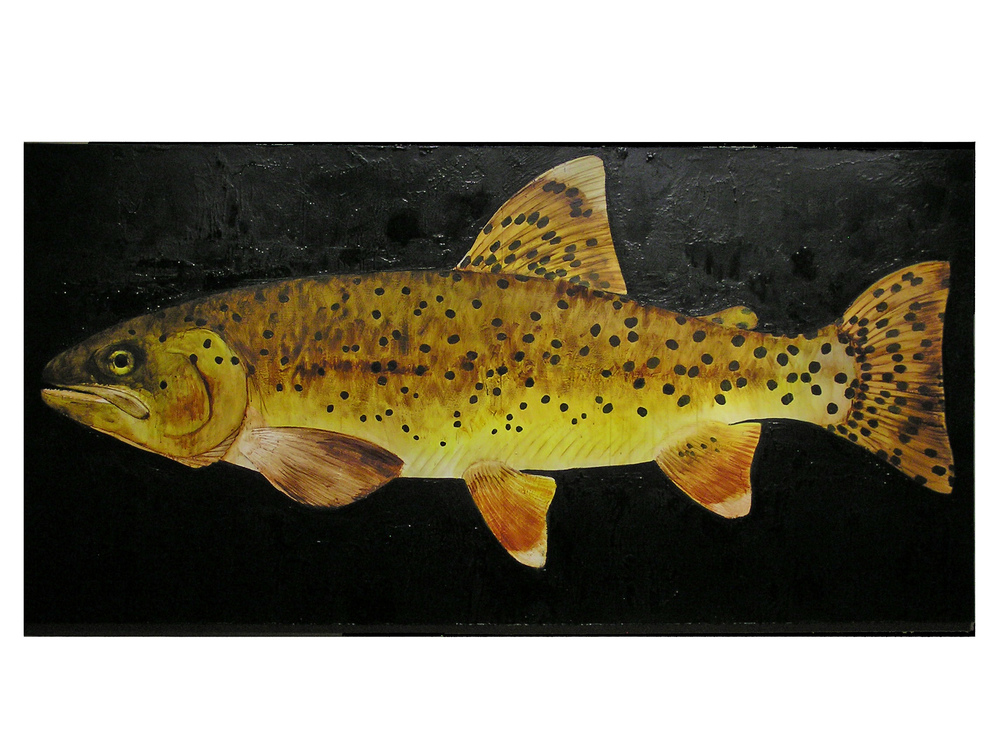
Native Trout of the American West
The Native Trout paintings represent a discussion of some of the American West’s most pressing contemporary issues, the first and foremost of which, will always be water and its management. One cannot speak about the West without discussing public land and private ownership, environmental and economic concerns such as mining and irrigation and farming arid land.
The native trout species I have chosen to paint were once common to most rivers and streams from the Pacific Ocean to the Rockies, from Mexico to Canada. Now, they number a fraction of their original population and many are only to be found inhabiting tiny, isolated headwater streams in small areas of their original range. Where some of these fish once grew to legendary size, Lahontan cutthroat trout were reported to reach sixty pounds, many now survive as six to ten inch specimens.
Wild, native trout populations are indicative of the environment in which they live, and reflect the choices we have made and will be making regarding the use of these watersheds. Native trout habitat has been affected by mining, grazing, farming, and irrigation needs. Blocked by dams, spawning runs have ceased. Many native species have been displaced by the introduction of non-native species.
Recovery efforts supported by, private organizations, government, and tribal agencies are underway throughout the region.
A simpler explanation of the paintings might have to do with the fact that research for the work requires me to spend as much time as possible, chasing after wild native fish in remote but untouched locations. Regrettably, the time spent on research is never enough. But, fishing is all about hope.
